SPOT
INTERESTING SPOT
We will introduce interesting places such as recommended historical buildings, shrines and temples by prefecture.
The required time is only a guideline. Please do your own research before visiting.
歴史的建造物や神社やお寺などの興味深いスポットを都道府県別にご紹介します。
所要時間はあくまで目安です。訪れる際はご自身でお調べの上、ご出発ください。
OSAKA大阪
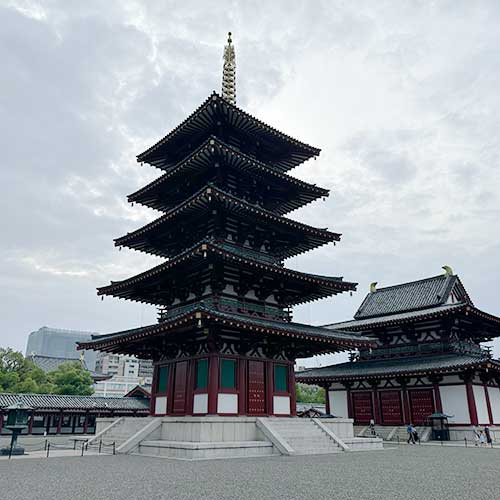
Shitennoji Temple四天王寺
This temple is said to have been built by Prince Shotoku in the first year of Emperor Suiko (593). It is the head temple of the Japanese sect, regardless of sect, and there are halls related to the founders of each sect.
聖徳太子が推古天皇元年(593年)に建立したとされる寺院。宗派にこだわらない和宗総本山であり、各宗の祖師にまつわるお堂が並んでいます。
- Address 大阪市天王寺区四天王寺1丁目11番18号
- from REBORN 20分 / 20min
- SNS
-
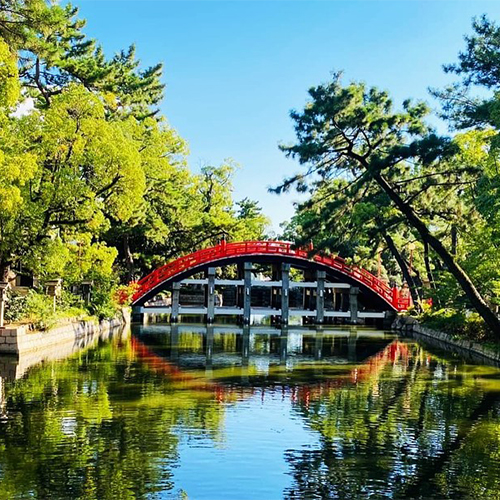
Sumiyoshi Shrine住吉大社
A shrine dedicated to the sea gods Tsutsuo Mikami and Empress Jingu. It is the headquarters of Sumiyoshi Shrines across the country, and the number of pilgrims on the first three days of the year exceeds 2 million people each year.
海の神である筒男三神と神功皇后を祭神とする神社。全国の住吉神社の総本社で、三が日の参詣者数は例年200万人以上に上ります。
- Address 大阪府大阪市住吉区住吉2丁目9-89
- from REBORN 15分 / 15min
- SNS
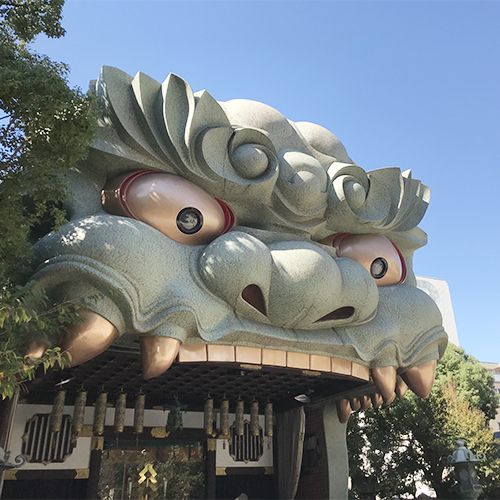
Namba Yasaka Taisha難波八坂神社
This shrine is said to be a native deity of the Namba area and is called 'Namba Shimo no Miya'. It is famous for its Shishiden, which depicts a large lion swallowing evil spirits. The tug-of-war ritual held every January has been designated as an intangible folk cultural property by Osaka City.
「難波下の宮」と呼ばれる難波一帯の産土神だと伝えられる神社。大きな獅子が邪気を飲み込む様を表した獅子殿が有名です。毎年1月に行われる綱引神事は大阪市指定無形民俗文化財に指定されています。
- Address 大阪府大阪市浪速区元町2丁目9-19
- from REBORN 15分 / 15min
- SNS
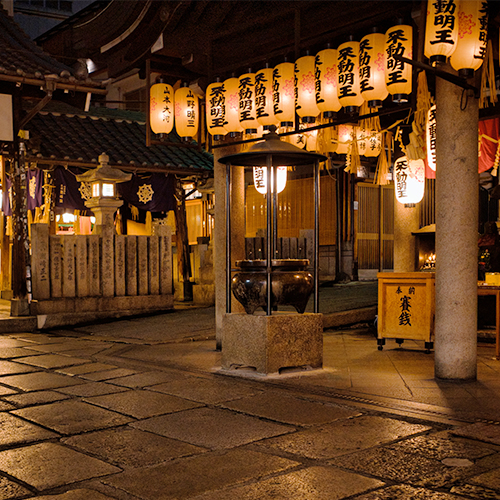
Hozenji Yokocho法善寺横丁
A narrow cobblestone alley in the grounds of Hozenji Temple in Namba, Osaka. Both sides of the road are lined with famous restaurants that serve long-established Japanese cuisine, okonomiyaki, and kushikatsu, allowing you to enjoy your meal while enjoying the traditional atmosphere.
大阪・なんばにある法善寺の境内にある石畳の狭い裏路地。道の両側には老舗割烹・お好み焼き・串カツなどの有名飲食店が並んでおり、昔ながらの雰囲気を楽しみながら食事を楽しめます。
- Address 大阪府大阪市中央区難波1丁目1-6
- from REBORN 15分 / 15min
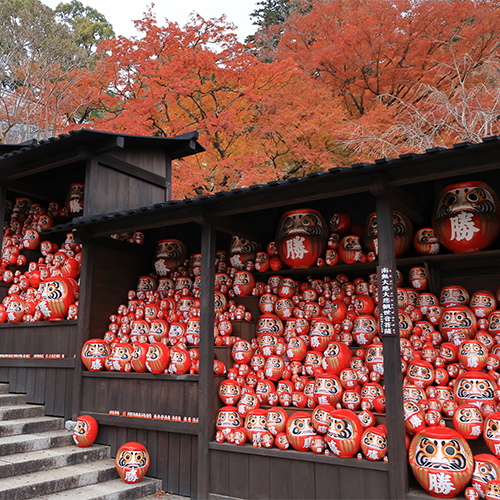
Katsuoji Temple勝尾寺
Katsuoji Temple is known as a temple to pray for good luck in matters such as entrance exams, illness, employment, and business. The sixth head of the temple, Gyoen Shonin, cured Emperor Seiwa of his illness with his prayers, and the Emperor gave him the temple name `Shooji,' which later became `Katsuoji.' In the precincts, there are rows of dedicate winning daruma.
受験・病気・就職・商売など勝運祈願のお寺として知られる勝尾寺。六代座主行巡上人が清和天皇の病を祈祷で治したことで「勝王寺」の寺号を帝より賜わり、後に「勝尾寺」となりました。境内には奉納された勝ちダルマがずらりと並んでいます。
- Address 大阪府箕面市粟生間谷2914-1
- from REBORN 1時間40分 / 1h40min
- SNS
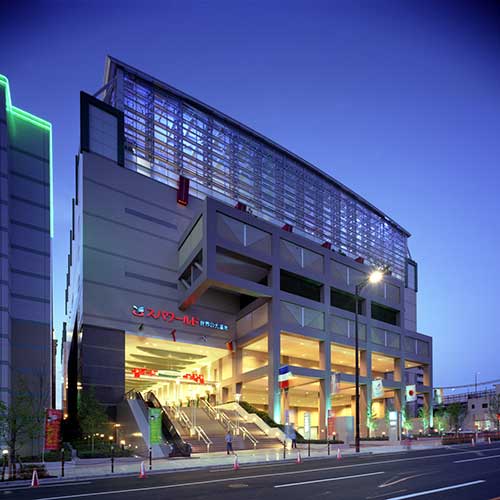
Spa Worldスパワールド
A hot spring theme park located in Shinsekai, Naniwa Ward, Osaka City. You can enjoy 17 types of baths from 12 countries around the world, rock baths, and pools, and you can also stay at the attached hotel.
大阪市浪速区の新世界にある温泉テーマパーク。世界12か国17種類のお風呂と岩盤浴・プールが楽しめ、併設のホテルに宿泊もできます。
- Address 大阪府大阪市浪速区恵美須東3丁目4-24
- from REBORN 徒歩9分 / 9min(walk)
- SNS
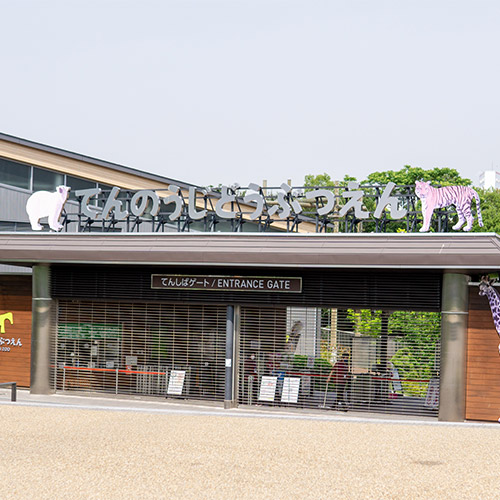
Tennoji Zoo天王寺動物園
A zoo located in Tennoji Park in Osaka. We are putting effort into ecological exhibits that recreate as much as possible how animals live in the wild.
大阪の天王寺公園内にある動物園。動物が野生で生きる姿をできる限り再現する生態展示に力を入れています。
- Address 大阪府大阪市天王寺区茶臼山町1-108
- from REBORN 徒歩11分 / 11min(walk)
- SNS
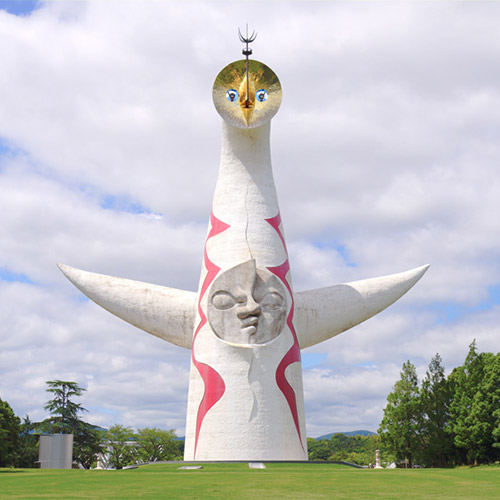
Tower Of The Sun Museum太陽の塔
A work of art and building created by Taro Okamoto that was built as part of the theme pavilion for the 1970 Japan World's Fair. The `golden face' at the top, the `sun face' on the front, and the `black sun' on the back each symbolize the future, present, and past. Inside the tower, there is a `Tree of Life' exhibit with the theme of biological evolution, which can be viewed by prior reservation.
1970年開催の日本万国博覧会・テーマ館の一部として造られた岡本太郎制作の芸術作品・建造物。頂部の「黄金の顔」・正面の「太陽の顔」・背面の「黒い太陽」はそれぞれ、未来・現在・過去を象徴しています。塔内部は生物の進化をテーマとした「生命の樹」が展示されており、事前予約により見学可能。
- Address 大阪府吹田市千里万博公園1-1
- from REBORN 1時間10分 / 1h10min
- SNS
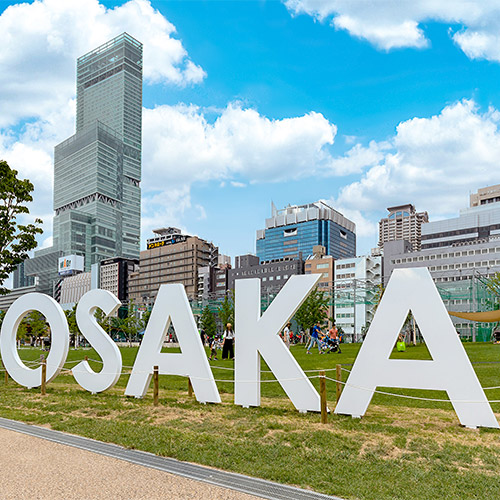
Tenshiba Parkてんしば
A grassy area in Tennoji Park where you can have a picnic. There are restaurants, cafes, futsal facilities, etc., and events such as summer festivals and beer festivals are also held here.
天王寺公園にあるピクニックも可能な芝生エリア。レストラン・カフェ・フットサル施設などが集まっており、夏祭り・ビールフェスといったイベントも開催されます。
- Address 大阪府大阪市天王寺区茶臼山町5-55
- from REBORN 11分 / 11min
- SNS
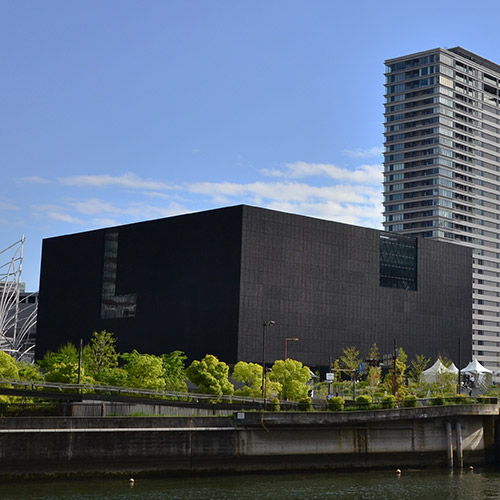
Nakanoshima Art Museum中之島美術館
The art museum opened in 2022 after about 40 years of planning. While specializing in art and design from the late 19th century to the present day, it is increasing its presence as a new art hub in Osaka.
約40年の構想を経て2022年に誕生した美術館。19世紀後半から現代までの美術とデザインを専門とする一方で、大阪の新たなアート拠点として存在感を増しています。
- Address 大阪府大阪市北区中之島4丁目3-1
- from REBORN 30分 / 30min
- SNS
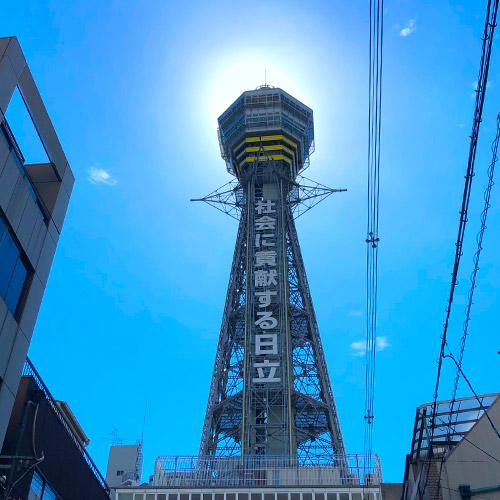
Tsutenkaku Tower通天閣タワー
Tsutenkaku is an observation tower built in 1912 in Shinsekai, Naniwa Ward, Osaka City, and the current Tsutenkaku is the second generation. It is said that touching the soles of the feet of the Billiken statue on the observation deck will bring you good luck.
明治45年(1912年)に大阪市浪速区の新世界に建てられた展望塔で、現在の通天閣は2代目。展望台にある「ビリケン像」の足の裏を触るとご利益があると言われています。
- Address 大阪府大阪市浪速区恵美須東1丁目18-6
- from REBORN 徒歩11分 / 11min(walk)
- SNS
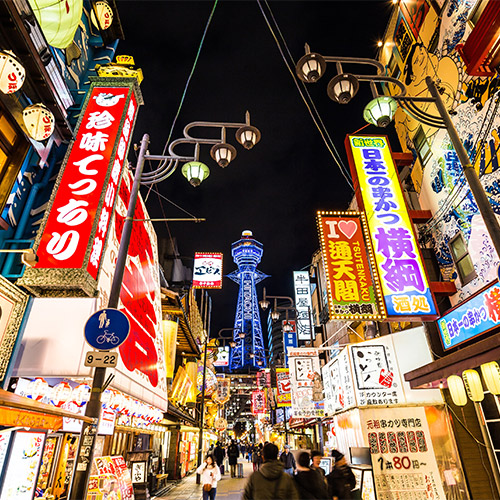
Shinsekai新世界
A downtown area in the southern part of Osaka City where Tsutenkaku and Janjan Yokocho are located. The 5th National Industrial Exhibition was held in 1903, and Tennoji Park, Tsutenkaku Tower, and Luna Park (closed) were built on the site, marking the beginning of the New World. Currently, it is a popular tourist destination where you can enjoy traditional Osaka scenery and Kushikatsu and Doteyaki.
通天閣やジャンジャン横丁がある大阪市南部の下町。明治36年(1903)に第5回内国勧業博覧会が開催され、跡地に天王寺公園と通天閣・ルナパーク(閉館)などがつくられたことが新世界のはじまりです。現在は昔ながらの大阪の風景や串カツ・どて焼きが楽しめる観光地として人気があります。
- Address 大阪府大阪市浪速区恵美須東2丁目5-1
- from REBORN 徒歩11分 / 11min(walk)
- SNS
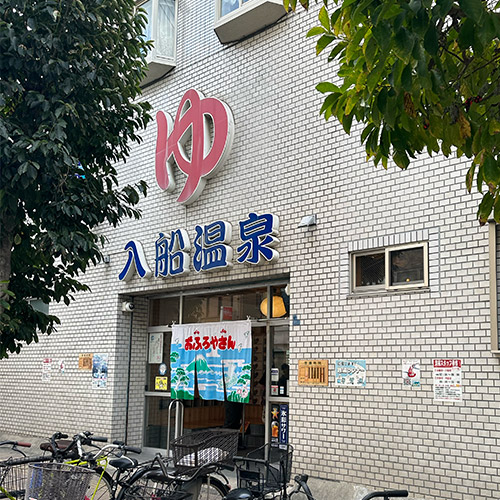
Irifue Onsen入船温泉
A public bath about 2 minutes walk from our hotel. It is famous for its sauna, which was renovated in 2022. You can enjoy soft water and a cold bath.
当ホテルから歩いて2分ほどの銭湯。2022年にリニューアルされたサウナが有名。軟水の柔らかなお湯と水風呂が楽しめます。
- Address 大阪府大阪市西成区萩之茶屋1丁目6-3
- from REBORN 徒歩2分 / 2min(walk)
- SNS
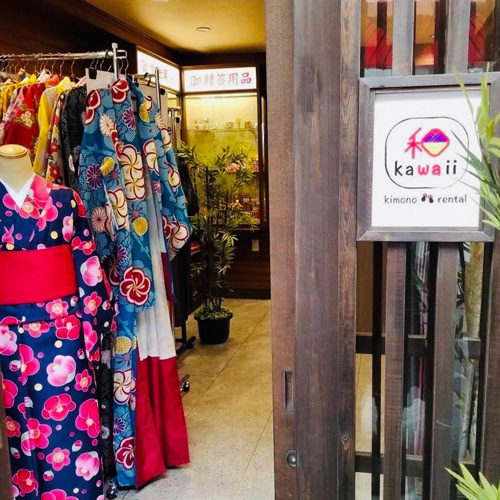
Kawaii Kimono Rentalka和ii 着物レンタル
A shop that offers kimono experiences, dressing, hair styling, and kimono rental in a shopping district near Sumiyoshi Taisha Shrine. You can change into a kimono and go on outings such as visiting Sumiyoshi Taisha Shrine or sightseeing in Osaka.
住吉大社近くの商店街にある着物体験・着付け・ヘアセット・着物レンタルのお店。着物に着替えて住吉大社へのお参りや大阪観光といったおでかけができます。
- Address 大阪府大阪市住之江区粉浜3-9-18
- from REBORN 15分 / 15min
- SNS
KYOTO京都
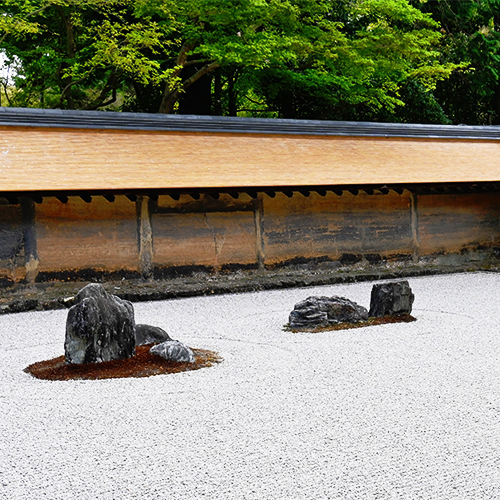
Ryoanji Temple龍安寺
A Zen temple founded in 1450. The `Karesansui Garden,' which consists of 15 stones set in a white sand garden, is world-famous. In 1994, it was registered as a World Cultural Heritage Site as part of the 'Historic Monuments of Ancient Kyoto.'
1450年に創建された禅寺。白砂の庭に15個の石を置いた「枯山水庭園」が世界的にも有名です。1994年に「古都京都の文化財」の一部として世界文化遺産に登録されました。
- Address 京都府京都市右京区龍安寺御陵ノ下町13
- from REBORN 1時間40分 / 1h40min
- SNS
-
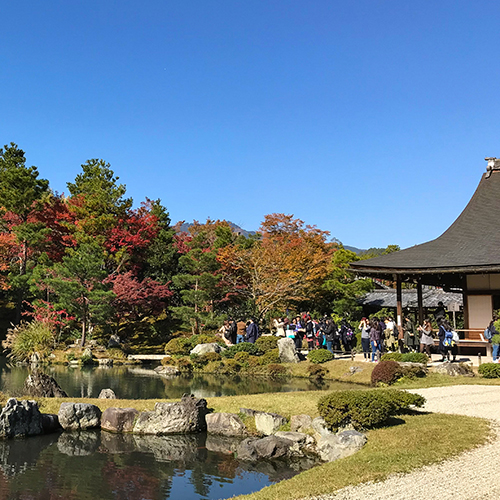
Tenryuji Temple天龍寺
This is the head temple of the Tenryuji sect of Rinzai sect in Saga Arashiyama. The `Sogenchi Garde' is world-famous, and is like a painting that incorporates the mountains around Sogenike. In 1994, it was registered as a World Cultural Heritage Site as part of the 'Historic Monuments of Ancient Kyoto.'
嵯峨嵐山にある臨済宗天龍寺派の大本山の寺院。曹源池を中心に山々を取り込んだ絵画作品のような「曹源池庭園」は世界的にも有名です。1994年に「古都京都の文化財」の一部として世界文化遺産に登録されました。
- Address 京都府京都市右京区嵯峨天龍寺芒ノ馬場町68
- from REBORN 1時間30分 / 1h30min
- SNS
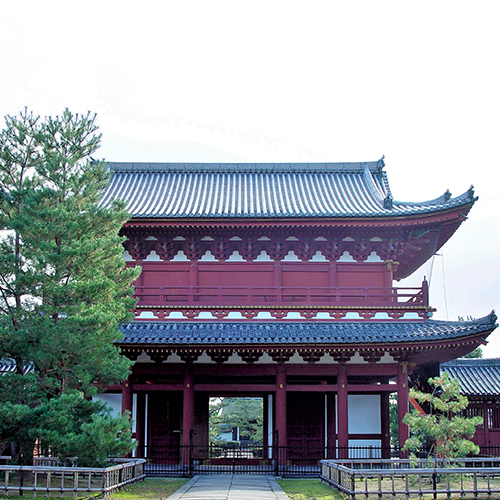
Myoshinji Temple妙心寺
The main temple of the Myoshinji sect of the Rinzai sect. 46 sub-temples stand around the central temple, forming one large temple complex. Another highlight is the `Unryu-zu' painted on the ceiling by Kano Tanyu, a painter from the Edo period.
臨済宗妙心寺派の大本山の寺院。中心伽藍の周囲に46の塔頭寺院が立ち並び一大寺院群を形成しています。江戸時代の絵師・狩野探幽が天井に描いた「雲竜図」も見どころです。
- Address 京都府京都市右京区花園妙心寺町1
- from REBORN 1時間40分 / 1h40min
- SNS
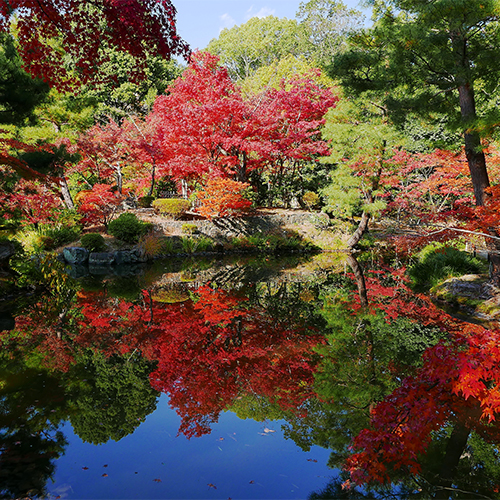
Toujiin Temple等持院
This temple was founded by Takauji Ashikaga, the founder of the Muromachi Shogunate, and Muso Kokushi, the founder of Tenryuji Temple. It is also famous as the family shrine of the Ashikaga Shogun family. One of the highlights is the statue of the founder, painted with a dynamic touch by Sekimokuo, the former head of the Tenryuji sect.
室町幕府を開いた足利尊氏が天龍寺開山夢窓国師を開山に迎えた寺院。足利将軍家歴代の菩提所としても有名です。天龍寺派の元管長・関牧翁が豪快なタッチで描いた「祖師像」も見どころの1つ。
- Address 京都府京都市北区等持院北町 63番地
- from REBORN 1時間45分 / 1h45min
- SNS
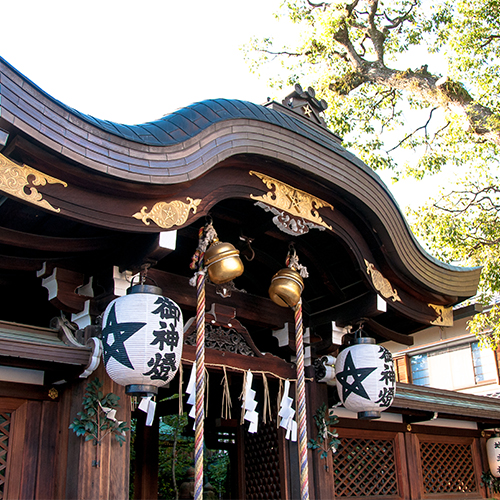
Seimei Shrine晴明神社
A shrine whose main deity is Abe Seimei, an astronomer from the Heian period. Due to repeated wars and capital improvements, the scale of the shrine was reduced and the shrine building fell into disrepair, but the parishioners played a central role in rebuilding the shrine. The novel and movie sparked the Abe Seimei boom, and now worshipers come from all over Japan.
平安時代の天文学者・安倍晴明を主神とする神社。度重なる戦火や都整備により規模が縮小し社殿が荒れた時代が続きましたが、氏子が中心となって復興が進められました。小説・映画により安倍晴明ブームが起こり、現在は日本全国から参拝者が訪れます。
- Address 京都府京都市上京区晴明町806
- from REBORN 1時間30分 / 1h30min
- SNS
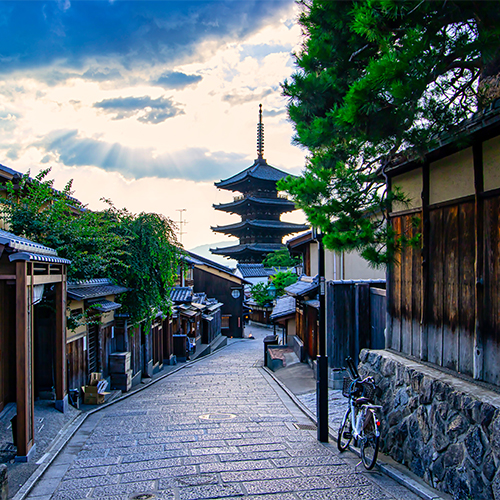
Ninen zaka St.二寧坂・産寧坂
The approach to Kiyomizu-dera Temple, a world heritage site in Kyoto. The pronunciation is Nineizaka (Nineizaka) and Sanneizaka (Sanneizaka). There are shops selling Japanese sweets, Japanese miscellaneous goods, antique art, Kiyomizu ware, and more. It is also recommended as a place to eat while walking and enjoy the quaint townscape.
京都にある世界遺産・清水寺までの参道。読み方は二寧坂(にねいざか)・産寧坂(さんねいざか)。和スイーツ・和雑貨・古美術・清水焼などの店が並んでいます。風情ある街並みを楽しめる食べ歩きスポットとしてもおすすめです。
- Address 京都府京都市東山区
- from REBORN 1時間30分 / 1h30min
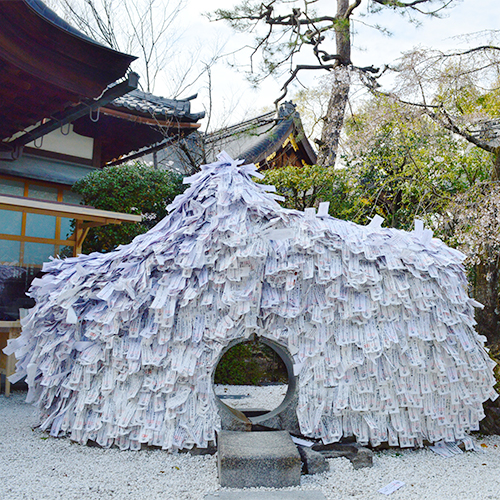
Yasui Konpiragu安井金毘羅宮
It is a historic shrine that is said to have the blessing of cutting off all kinds of bad relationships and finding good ones, and is also known as the `Enkiri Shrine.' Visitors make a wish by passing through the hole in the `Enkiri Enmusubi Monument,' a huge stone in the shape of an votive tablet.
あらゆる悪い縁を切り、良縁を結ぶご利益があるとされる歴史ある神社で「縁切り神社」の別称で有名。参拝者は絵馬の形の巨石「縁切り縁結び碑」の穴をくぐって願い事をします。
- Address 京都府京都市東山区下弁天町70
- from REBORN 1時間25分 / 1h25min
- SNS
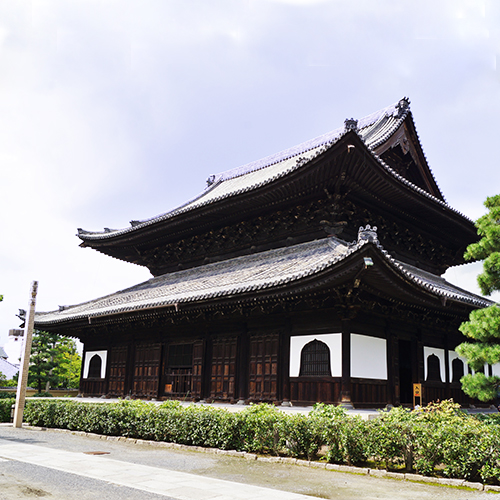
Kenninnji Temple建仁寺
The oldest Zen temple in Kyoto, said to have been built by Eisai in 1202, and the head temple of the Kenninji school of Rinzai sect. Highlights include the dry landscape garden `Daioen', the tea room `Toyobo', and the `Two Dragons' painted on the ceiling of the main hall.
建仁2年(1202)に栄西が建立したとされる京都最古の禅寺で、臨済宗建仁寺派の大本山の寺院。枯山水庭園「大雄苑」や茶室「東陽坊」、法堂天井に描かれた「双龍図」などが見どころです。
- Address 京都府京都市東山区大和大路通四条下る小松町584
- from REBORN 1時間15分 / 1h15min
- SNS
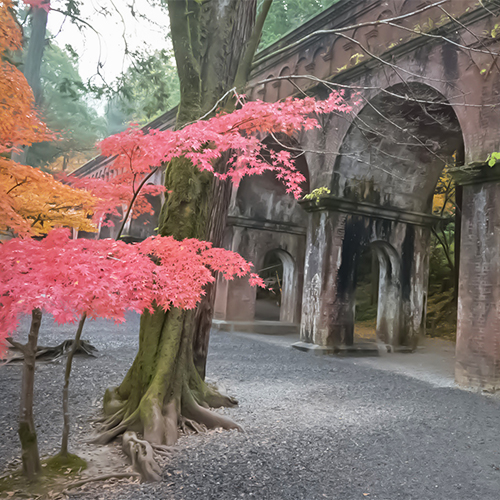
Nanzenji Temple南禅寺
This temple is the main temple of the Nanzenji sect of the Rinzai sect, which is known as a famous spot for cherry blossoms and autumn leaves. Sanmon, the stage for which Goemon Ishikawa described the Kabuki play Romon Gosangiri as `a spectacular view, a spectacular view,' is also counted as `Japan's three great gates.'
桜や紅葉の名所として知られる臨済宗南禅寺派の大本山の寺院。歌舞伎の楼門五三桐で石川五右衛門が「絶景かな、絶景かな」と表現した舞台である三門は、「日本三大門」にも数えられています。
- Address 京都府京都市左京区南禅寺福地町86
- from REBORN 1時間30分 / 1h30min
- SNS
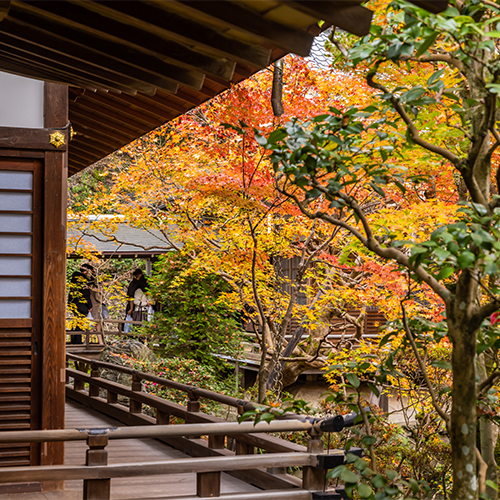
Eikando Zenrinji Temple永観堂禅林寺
It is a famous spot for viewing autumn leaves in the fall, with around 3,000 maple trees, and is the head temple of the Nishiyama Zenrin-ji school of the Jodo sect. The main image of Amida Nyorai is famous as `Mikaeri Amida' because it looks back to the left.
秋には約3000本のもみじが彩る紅葉の名所で、浄土宗西山禅林寺派の総本山。御本尊の阿弥陀如来像は左へ振り返っていることから「みかえり阿弥陀」として有名です。
- Address 京都府京都市左京区永観堂町48
- from REBORN 1時間30分 / 1h30min
- SNS
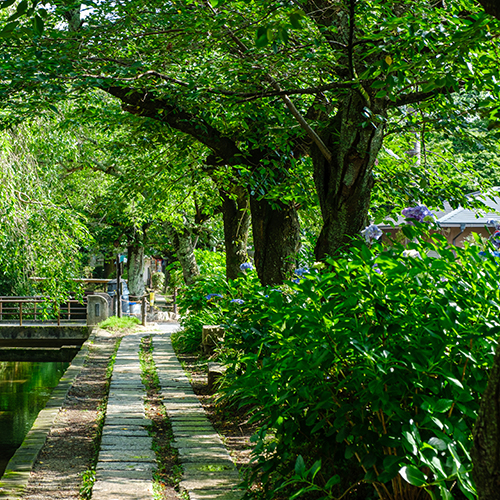
Tetsugakunomichi哲学の道
A approximately 2km walking path that connects Ginkakuji Temple and Kumano Nakaoji Shrine in Kyoto. It was built as a maintenance walkway for Lake Biwa Canal, and was named `Philosopher's Path' after an episode in which modern Japanese philosophers and economists walked lost in thought.
京都にある銀閣寺と熊野若王子神社を結ぶ約2kmの散歩道。琵琶湖疏水の管理用歩道として設置されたもので、近代日本の哲学者や経済学者らが思いにふけりながら歩いたエピソードから「哲学の道」と名付けられました。
- Address 京都府京都市左京区鹿ケ谷周辺
- from REBORN 1時間45分 / 1h45min
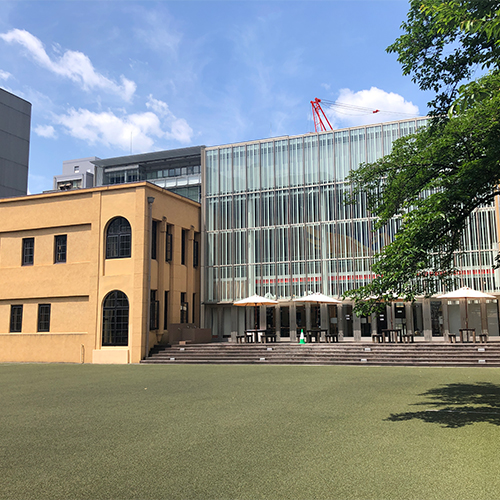
Kyoto International Manga Museum京都国際マンガミュージアム
Japan's first museum and library related to manga culture. We have a wide range of manga materials, from ukiyo-e prints from the Edo period to magazines from the Meiji, Taisho, and early Showa periods, rental books that were popular in postwar markets, and modern blockbusters. Special exhibitions and workshops are also held irregularly.
日本初のマンガ文化に関する博物館・図書館。江戸時代の浮世絵から明治・大正・昭和初期の雑誌、戦後の市で人気だった貸本、現代の大ヒット作品まで幅広いマンガ資料を取り揃えています。企画展示やワークショップも不定期で開催。
- Address 京都府京都市中京区金吹町452
- from REBORN 1時間15分 / 1h15min
- SNS
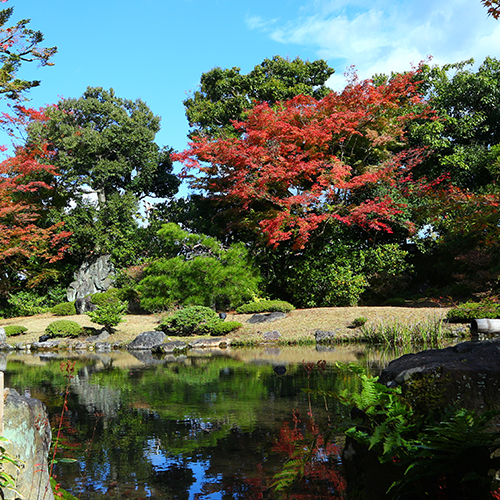
Kyoto villa, Murin-an無鄰菴
The villa of politician Aritomo Yamagata was built during the Meiji era. There is a Japanese garden, a main building, a Western-style building, and a tea room, and the garden designed by Jihei Ogawa VII is highly praised as a `naturalistic modern Japanese garden.' This place was the setting for the Murinan Conference, which discussed foreign policy before the outbreak of the Russo-Japanese war.
明治時代に造営された政治家山縣有朋の別荘。日本庭園・母屋・洋館・茶室があり、なかでも七代目小川治兵衛が手がけた庭園は「自然主義的な近代的日本庭園」だと高く評価されています。日露開戦前の外交方針を話し合った「無鄰菴会議」の舞台となった場所。
- Address 京都府京都市左京区南禅寺草川町3131番地
- from REBORN 1時間30分 / 1h30min
- SNS
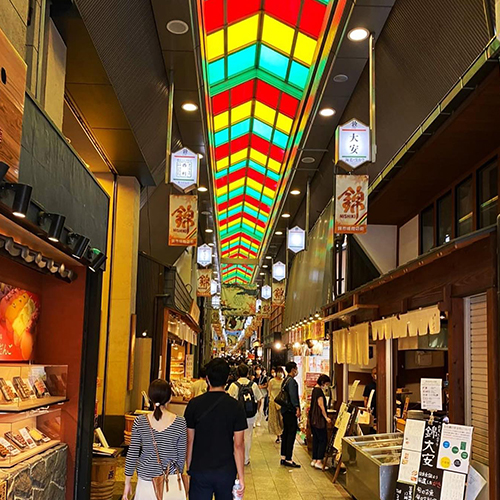
Nishiki Market錦市場
This market is known as `Kyoto's Kitchen,' with approximately 130 shops lined up approximately 400 meters from east to west. Legend has it that there was already a market there during the Heian period, and it continues to support Kyoto's food culture. This is a popular spot not only for purchasing essential Kyoto cuisine ingredients such as Kyoto vegetables, yuba, and raw gluten, but also for eating gluten-free buns, Kyoto-style takoyaki, and more.
東西約400メートルに約130もの店が並び「京の台所」と呼ばれる市場。平安時代にはすでに市があったと言い伝えられており、京の食文化を支え続けています。京野菜・湯葉・生麩など京料理に欠かせない食材の購入はもちろん、麩ばんじゅうや京風たこ焼きなどの食べ歩きでも人気のスポット。
- Address 京都府京都市中京区
- from REBORN 1時間15分 / 1h15min
- SNS
NARA奈良
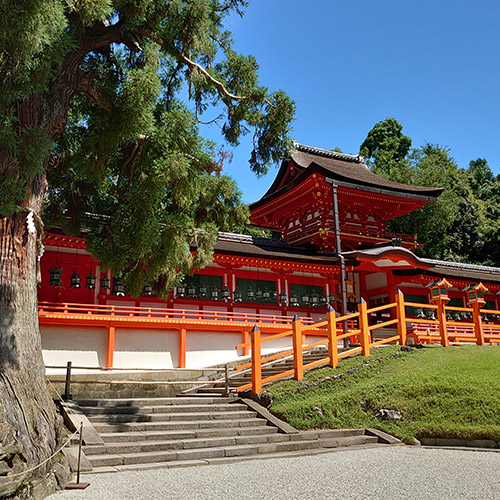
Kasuga Taisha春日大社
A shrine built during the Nara period for the protection of Heijo-kyo and the prosperity of the people. It is also famous as the headquarters of Kasuga Taisha shrines nationwide. In 1998, it was registered as a World Cultural Heritage Site as part of the "Historic Properties of Ancient Nara."
奈良時代に平城京の守護と国民の繁栄のために創建された神社。全国の春日大社の総本社としても有名。1998年に「古都奈良の文化財」の一部として世界文化遺産に登録されました。
- Address 奈良県奈良市春日野町160
- from REBORN 1時間5分 / 1h5min
- SNS
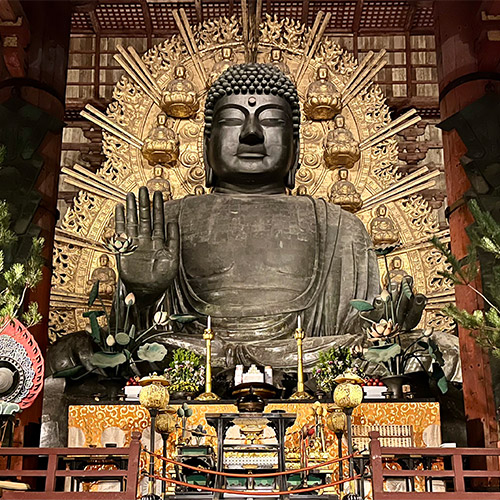
Todaiji Temple東大寺
This temple is famous for the "Great Buddha of Nara." It was built in the Nara period, but was destroyed by fire twice, and the current Great Buddha Hall was rebuilt in 1709. In 1998, it was registered as a World Cultural Heritage Site as part of the 'Historic Properties of Ancient Nara'.
「奈良の大仏さん」で有名な寺院。奈良時代に創建されましたが2度の兵火で焼失しており、現在の大仏殿は宝永6年(1709年)に再建されたものです。1998年に「古都奈良の文化財」の一部として世界文化遺産に登録されました。
- Address 奈良県奈良市雑司町406-1
- from REBORN 1時間5分 / 1h5min
- SNS
-
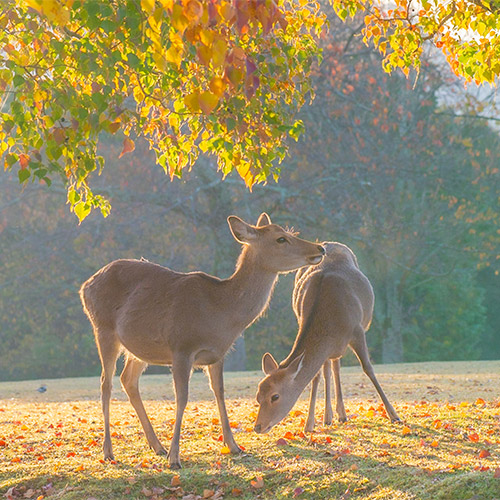
Nara Park奈良公園
A vast park that includes Todaiji Temple, Kasuga Taisha Shrine, and Mt. Wakakusa. One of the highlights is that over 1,000 deer live peacefully here.
東大寺・春日大社・若草山など敷地内がある広大な公園。1000頭を超える鹿がのんびりと暮らしているのも見どころの1つです。
- Address 奈良市登大路町30
- from REBORN 55分 / 55min
- SNS
WAKAYAMA和歌山
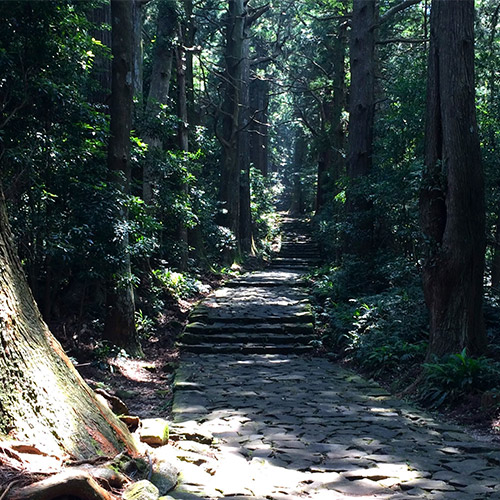
Kumano Kodo熊野古道
A pilgrimage route to Kumano Hongu Taisha, Kumano Hayatama Taisha, and Kumano Nachi Taisha, which are known as the `Kumano Sanzan'. In 2004, it was registered as a World Cultural Heritage Site as part of the "Sacred Sites and Pilgrimage Routes of the Kii Mountain Range."
「熊野三山」と呼ばれる熊野本宮大社・熊野速玉大社・熊野那智大社を巡礼するための参詣道。2004年に「紀伊山地の霊場と参詣道」の一部として世界文化遺産に登録されました。
-
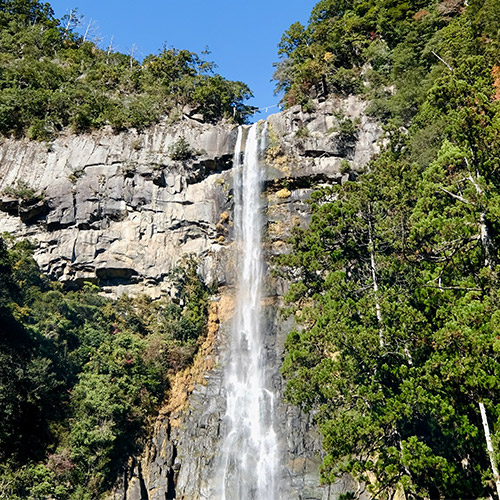
Nachi falls那智の滝
This waterfall is located in the middle reaches of the Nachi River, and the drop to the basin is 133 meters. It is counted as one of Japan's top three waterfalls, along with Kegon Falls (Tochigi Prefecture) and Fukuroda Falls (Ibaraki Prefecture). In 2004, it was registered as a World Heritage Site as part of the 'Sacred Sites and Pilgrimage Routes of the Kii Mountain Range.'
那智川中流にある滝で、滝壺までの落差は133 mを誇ります。華厳滝(栃木県)・袋田の滝(茨城県)と共に日本三名瀑に数えられています。2004年に「紀伊山地の霊場と参詣道」の一部として世界遺産に登録されました。
- Address 和歌山県東牟婁郡那智勝浦町那智山
- from REBORN 4時間30分 / 4h30min
- SNS
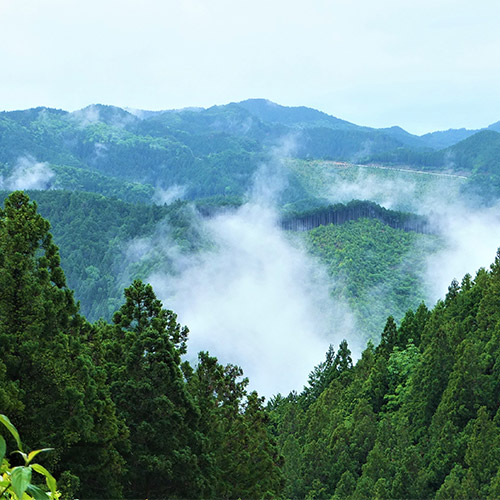
Koyasan高野山
This place was opened by Kobo Daishi Kukai over 1200 years ago as a training hall for Zen training. An important sacred place in Japanese Buddhism. In 2004, it was registered as a World Cultural Heritage Site as part of the 'Sacred Sites and Pilgrimage Routes of the Kii Mountain Range.'
1200年以上前に弘法大師・空海が修禅の道場として開いた場所で、日本仏教において重要な聖地。2004年に「紀伊山地の霊場と参詣道」の一部として世界文化遺産に登録されました。
- Address 和歌山県伊都郡高野町
- from REBORN 1時間30分 / 1h30min
- SNS





